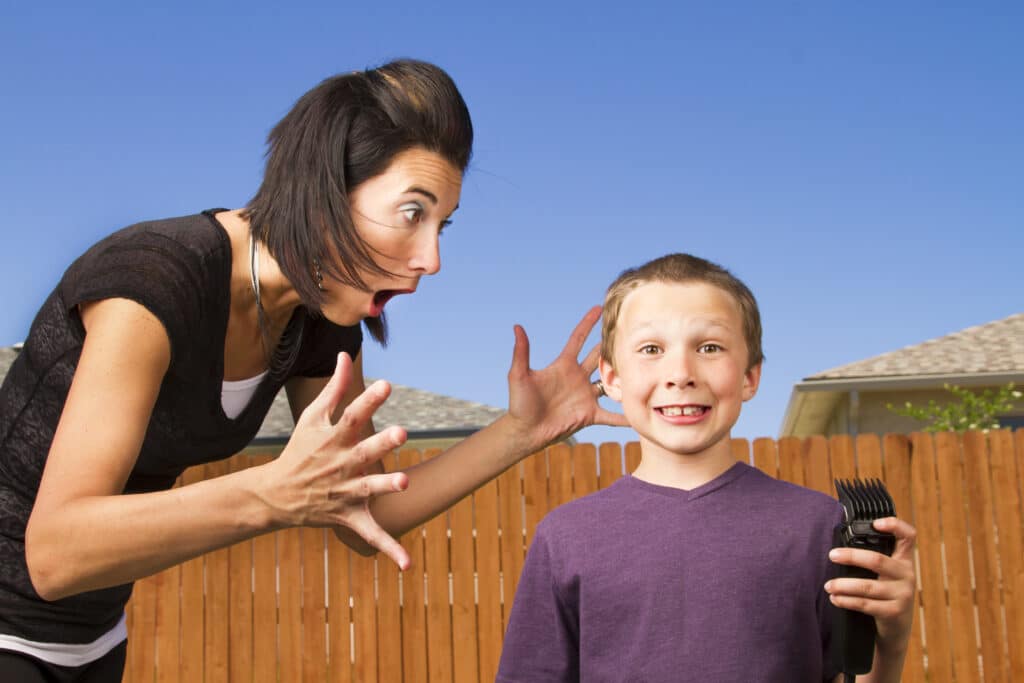
The basics about lice
Lice are tiny insects that reside in hair, bite, and multiply swiftly, depositing up to 10 eggs per day. And lice don’t discriminate! Anyone may get lice, regardless of age, economic status, ethnicity, or gender.
Fortunately, contrary to common belief, lice do not transfer disease, but they do itch!
Lice are parasites that feed on human blood. They leave saliva where they bite, which causes the bite to itch. Children may scratch lice bites until they bleed. And lice bites, like any other open wound, can get infected.
Where do lice occur?
Lice lay eggs (known as nits) on the scalp, which hatch and feed on the host’s blood. They are also transferred from one person to another through sharing combs, close contact with a person infected with lice, and sharing other personal items.
Head lice gather on the scalp and feed on the blood, a common cause of itchiness in children. Head lice are more than simply a cosmetic problem. They pose a public health risk and can spread swiftly. In the United States, lice infestations have been documented in all 50 states.
How did my child get lice?
Contact with an already infested person is the most typical way to get lice. One-on-one interaction is common during play at school, home, and elsewhere (sports activities, playground, slumber parties, and camp).
Although uncommon, they can be transmitted via sharing clothing or other items. It happens when lice crawl or nits linked to shedding hair hatch and fall on shared clothing or other items. Examples include:
Sharing clothing (hats, scarves, jackets, sports uniforms) or objects (hair ribbons, barrettes, combs, brushes, towels, plush animals) recently worn or used by an infected person, or resting on a bed, sofa, pillow, or carpet that has lately been in touch with an infected person.
Why do children get lice repeatedly?
There are two causes of repeated lice infestations of your child
- The lice treatment you used was ineffective.
- You or someone in your household had another lice encounter.
Treatment was ineffective
Treatments might fail for a variety of reasons. Research has shown that lice might resist pesticide treatments in some geographical regions.
Second, adult female lice may deposit up to ten eggs every day. Both over-the-counter and prescription lice treatments kill live lice and their eggs (nits), but they may not capture all of them. Because of the lice’s life cycle, over-the-counter and prescription treatments may require two treatments, 7-9 days apart. If you do not reapply for the treatment after the specified number of days, lice eggs may remain and hatch later.
To be most successful, follow up a prescription or over-the-counter treatment with two weeks of combing through the hair to clear the head of lice.
Someone or Something else Returned the Lice to Your Children
You can get rid of lice on your head and in your house just to have them crawl back onto you or your child at daycare, school, or the gym. You may not be able to control the environment outside your house, but the following techniques can help keep lice at bay:
- Avoid head-to-head and hair-to-hair contact, it is the most typical method that head lice spread. Reconsider children’s overnight parties, sleepover camps, and athletic activities such as wrestling. Avoid activities that involve hair-to-hair contact as much as possible.
- Don’t share hats, scarves, hoodies, or other clothes.
- Do not share hair ribbons, barrettes, combs, or brushes. (According to research, girls are more prone than boys to have lice.)
- Do not share towels.
- Do not share mattresses, sofas, carpets, cushions, or plush animals with someone who has or has just had lice.
To Treat Lice
Because of the number of lice treatments available, lice removal has become simpler. Here are quick and easy ways to treat lice infestation:
- Head Lice Shampoo – With Licefreee’s everyday shampoo, you can help remove an infestation and prevent a possible re-infestation. One of the best (and more importantly, non-toxic) follow-up treatments to help avoid reinfestation of lice or nits (lice eggs)
- Head Lice Spray: Removing lice and nits on contact is just a spritz away. One of the best ways to get rid of lice and nits is Licefreee Spray, which effectively kills both super head lice and nits. Licefreee Spray uses a natural, homeopathic solution that contains sodium chloride, more commonly known as salt.
- Lice and Nit Comb – A fine-toothed comb used for natural lice treatment can help to pull out both head lice and their eggs. Best for you and your family, Licefreee NitDuo tools are 100% safe. Our advanced nit combs provide a comfortable and effective way to safely, quickly, and easily remove lice and nits. With this unique technology, you can be sure it’s working without harming your child or causing any pain.
- Home Treatment – Cleaning and treating your home ensures no lice live on your furniture, mattresses, and other non-washable surfaces. Licefreee Home Spray for furniture uses an active ingredient derived from orange peels, giving it a pleasant scent and making it non-staining.
Eliminate Lice from Your Children Today by Using Licefreee!
Although lice are a regular occurrence, they are never pleasant. While lice infestations are most frequent in children, anybody may acquire them. So when it comes to safeguarding yourself and your loved ones, you must ensure that you have the proper tools to do the task quickly and effectively.
Licefreee is a non-toxic, safe alternative to traditional lice treatments that involve chemical pesticides. We debuted our original non-toxic lice treatment, Licefreee gel, in 1999 and have expanded our product line while keeping our reputation as one of the most trustworthy and reliable treatments on the market. When you or someone you know has lice, don’t hesitate to pick up some Licefreee today!
